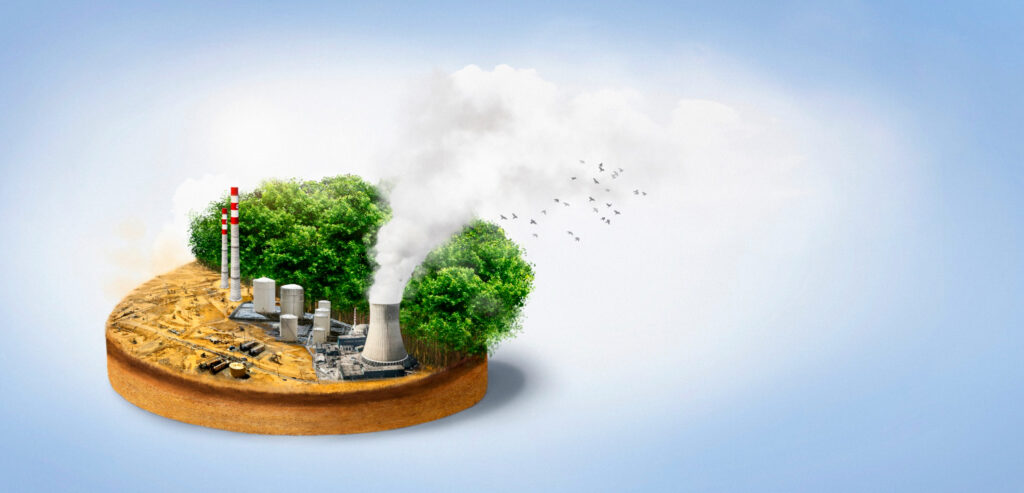The EU Carbon Border Tax for 2025, which operates under the name of Carbon Border Adjustment Mechanism, will reshape international trade patterns. Through its Green Deal, the European Union strives for carbon neutrality by 2050. And therefore, the EU carbon tariffs serve as vital controls to enforce equal carbon requirements between European products and imported goods.
The CBAM India policy brings major changes to Indian industries that export to the European Union due to their heavy dependence on such markets. This article explains the upcoming EU Carbon Border Tax 2025 assessment and its effects on Indian exporting organizations. Also, exploring the necessary steps for businesses to adapt to the upcoming carbon-focused market.
Understanding the EU Carbon Border Adjustment Mechanism
This policy, known as the Carbon Border Adjustment Mechanism, works to stop the process of carbon leakage. The process of shifting production from countries implementing stricter climate regulations to less-regulated areas defeats pollution reduction efforts because it leads to net-zero green emission gains globally.
The EU will enforce a Carbon Border Tax 2025 on imported steel products and cement alongside aluminium and fertiliser, and hydrogen and electricity when it takes effect.
- Steel
- Cement
- Aluminium
- Fertilisers
- Hydrogen
- Electricity
The Carbon Border Adjustment Mechanism requires importers to acquire carbon certificates that match their product emissions in levels equivalent to what EU producers spend for their emissions under the EU Emissions Trading System (ETS).
The European Commission estimates the CBAM will impose annual taxes on foreign imports amounting to $75 billion while targeting major export products of India.
CBAM India Impact: How Serious is it?
The environmental effect of CBAM India makes a substantial difference. The key economic relationship between India and Europe operates at large volumes. While several sectors producing goods within India release high levels of carbon emissions. The Ministry of Commerce reported that India exported approximately during FY2022- 23.
- $8.4 billion worth of steel products
- $1.2 billion worth of aluminium
- $1.6 billion worth of cement
These exports represent a significant share of these exports. And therefore, the Indian exporters will suffer additional costs on those products with high carbon footprints once the EU carbon tariffs are in effect.
According to the Indian Steel Association, the further added cost burden from the EU Carbon Border Tax 2025. It can be in line from 15% to 25% for Indian exporters, depending on the carbon intensity of production processes.
Timeline for the EU Carbon Border Tax 2025
The implementation of the Carbon Border Adjustment Mechanism is taking place in phases.
- 2023-2025 (Transition Period): Reporting requirements only. If they don’t pay the tax yet, businesses must disclose embedded emissions when they export from Britain to EU countries.
- From 2026 onwards: Full operation of the EU Carbon Border Tax 2025, with carbon certificates mandatory.
The short window of time presented in this timeline gives Indian exporters a heads-up before EU carbon tariffs start swinging their financial impacts.
Why Indian Exporters Are Vulnerable
Several factors that Indian exporters are particularly impacted by the CBAM India.
High Carbon Intensity:
Because carbon footprints are so high, coal-fired power is essential to Indian manufacturing. Be it steel or aluminium, compared to European producers.
Lack of Carbon Pricing:
Unlike the EU’s Emissions Trading System, India currently does not have a national carbon pricing mechanism that would make compliance easier.
Limited Emission Data:
An expedient approach that involves accurate carbon accounting and emissions reporting has yet to be developed for many of the Indian industries. So, they struggle to meet the Carbon Border Adjustment Mechanism requirements of disclosure.
Preparing for the EU Carbon Border Tax 2025: A Roadmap for Indian Exporters
To ensure the impact is limited in the CBAM on India, Indian exporters need to move now. Here’s a step-by-step roadmap:
Conduct Carbon Footprint Audits
To begin with, it is necessary to measure and document embedded emissions in products accurately. Companies are required to report requirements under the Carbon Border Adjustment Mechanism. It means that carbon audits from third parties need to be confirmed.
Adopt Cleaner Technologies
Producers can make very large emissions reductions by switching to low-carbon or renewable sources of energy. For example:
- Instead of using coal, steel production uses hydrogen.
- Rather than creating aluminium from bauxite, recycling is preferable.
The EU carbon tariffs can be lowered by adopting cleaner processes.
Invest in Carbon Offsets and Certifications
In the interim until industries become fully equipped to move to green technologies, one possible solution is to buy verified carbon offsets. Getting such certifications as ISO 14064 on greenhouse gas accounting can also help to prove your compliance under the EU Carbon Border Tax 2025 framework.
Engage with EU Buyers
Indian exporters should do well to consult with their European buyers on the exact CBAM compliance requirements. Transparent collaboration would allow EU carbon tariffs to be avoided and access to the market to be maintained after they are in place.
Advocate for Domestic Carbon Policies
It needs to be pushed for a national carbon pricing mechanism or another green incentive. And it must be doing by industry groups to engage with the Indian government. Aligning India’s exports with the global standards using a domestic carbon market can help to ease the EU Carbon Border Tax 2025 burden.
How the Indian Government is Responding
Recognizing the CBAM India impact, the Indian government is now considering many new initiatives.
- Draft carbon market framework: The Indian Ministry of Power brought out a draft framework for the carbon market that Indian companies could use to trade carbon credits within the country.
- National Green Hydrogen Mission: India plans to be a hub for green hydrogen production, thus reducing emissions of industry like steel and fertilisers, amongst others, through incentives.
- Green Manufacturing PLI Schemes: Incentives linked to production in clean processes, such as solar PV modules and advanced chemical cells, are provided by PLI Schemes for Green Manufacturing.
Such initiatives will ultimately reduce these exporters’ carbon footprint. It will therefore make them more competitive when the EU Carbon Border Tax 2025 comes fully into force.
Global Implications Beyond India
India is not alone. Hackers in an emerging economy like China, Brazil, or South Africa have likewise complained about the Carbon Border Adjustment Mechanism. Fearing that it could develop to be a type of green protectionism. The World Trade Organization (WTO) is keeping an eye on the CBAM to ensure that it complies with the WTO rules on international trade.
The EU says that the EU carbon tariffs aim only to stop carbon leakage and remain consistent with WTO rules.
Final Thoughts: Turning Challenge into Opportunity
Undeniably, CBAM India has a potential negative impact, but it can also be a force for good. It is already possible for Indian exporters who act early by reducing emissions, adopting clean technologies, and being transparent to utilise the EU Carbon Border Tax 2025. And indeed make it a competitive advantage.
Adapting to the CBAM will not just keep Indian corporations on course for access to their European markets. But, will also provide them with protection in the future against similarly envisaged measures by other large economies in the world.
FAQs for EU Carbon Border Tax 2025
- Q1. What is the EU Carbon Border Tax 2025?
The EU Carbon Border Tax 2025 is part of the European Union’s Green Deal to curb carbon emissions by imposing carbon costs on imports like steel, aluminium, and cement through the Carbon Border Adjustment Mechanism.
- Q2. How will the Carbon Border Adjustment Mechanism affect Indian exporters?
The Carbon Border Adjustment Mechanism will increase the cost of Indian exports to the EU if products have high carbon emissions, making the CBAM India impact particularly significant for industries like steel and cement.
- Q3. What products from India are likely to be impacted by EU carbon tariffs?
EU carbon tariffs will mainly impact Indian exports of steel, aluminium, cement, fertilisers, hydrogen, and electricity due to their high carbon intensity.
- Q4. How can Indian businesses prepare for the EU Carbon Border Tax 2025?
To reduce the CBAM India impact, Indian businesses should conduct carbon audits, adopt cleaner technologies, improve emission reporting, and engage with EU buyers to meet Carbon Border Adjustment Mechanism standards.
- Q5. Is the Indian government taking steps to address the CBAM India impact?
Yes, recognizing the CBAM India impact, the Indian government is promoting initiatives like carbon credit markets, green hydrogen production, and cleaner manufacturing incentives to help exporters adapt to the EU Carbon Border Tax 2025.




The very root of your writing while appearing reasonable initially, did not settle very well with me personally after some time. Someplace within the paragraphs you were able to make me a believer but just for a short while. I however have got a problem with your jumps in logic and you would do well to help fill in those breaks. In the event you can accomplish that, I would certainly end up being amazed.
Just wanna comment that you have a very nice website , I like the design and style it actually stands out.